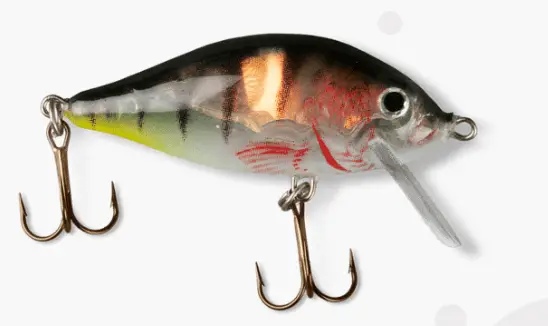To set a hook while fishing, wait for the fish to take the bait and then close the bail or engage the reel, slowly cranking until the line becomes tight. Do not move the rod, but let the fish and the pressure from the crank increase.
Setting the hook properly is crucial for a successful fishing experience. It ensures that the fish is securely hooked and prevents it from escaping. Whether you’re a beginner or an experienced angler, knowing how to set a hook effectively is essential.
By following the right technique, you can increase your chances of landing a fish and have a more enjoyable fishing trip. We will discuss the steps to set a hook properly and provide you with some useful tips and techniques to improve your fishing skills. So, let’s dive in and learn how to set a hook like a pro.
How To Set A Hook
When it comes to fishing, setting a hook properly is crucial for a successful catch. Avoid waiting too long and feel the weight of the fish before setting it, ensuring a solid hook set.
Setting The Hook: Ensuring The Catch
When it comes to fishing, one of the most crucial skills to master is setting the hook. This technique is essential for successfully securing your catch and reeling it in. Below, we’ll discuss the key steps and considerations for setting the hook effectively.
Proper Timing And Technique
- Timing: Proper timing is critical when setting the hook. Wait for a definitive tug or movement on your line before initiating the hook set. Reacting too soon may result in a missed opportunity, while delaying the set can allow the fish to spit out the bait.
- Technique: When you feel the fish take the bait, swiftly and decisively jerk the rod upwards to embed the hook firmly in the fish’s mouth. This action should be quick and forceful, but not overly aggressive to avoid breaking the line.
Understanding Hook Types And Functions
Understanding Hook Types and functions –
- Circle Hooks: These hooks necessitate a slightly different approach. Rather than a forceful jerk, a smooth reeling motion is required to allow the hook to catch hold as the fish swims away with the bait. This method minimizes the risk of the fish detecting the hook and escaping.
- Treble Hooks: With three points, treble hooks provide a higher chance of hooking the fish. To set these hooks effectively, maintain tension on the line and swiftly lift the rod, ensuring all three points engage with the fish’s mouth.
Mastering The Hook Set
- Confidence: A successful hook set requires confidence and quick reflexes. Hesitation can result in missed opportunities, so be prepared to act decisively when the moment arises.
- Practice: As with any skill, practice makes perfect. Spend time honing your hook-setting technique to improve your chances of securing a solid catch on your fishing outings.
Remember, mastering the hook set is a fundamental aspect of fishing. By understanding the appropriate timing, technique, and hook types, you can significantly increase your success rate and enjoy a more rewarding fishing experience.
How To Set A Hook Bass Fishing
Setting a hook when bass fishing is crucial for a successful catch. Wait for the fish to nibble, then swiftly and firmly jerk the rod to secure the hook in its mouth. Mastering this technique enhances your fishing experience and increases your chances of reeling in a big one.
- Ensure Proper Rod Position:
- Hold the rod at an angle above your shoulder, ready for a firm hookset.
- Keep a slight bend in the rod to maintain tension on the line.
- Detect the Bite:
- Feel for any twitch or sudden movement on the fishing line.
- Monitor for any resistance or movement that suggests a fish has taken the bait.
- Execute a Swift Hookset:
- When you feel a bite, swiftly jerk the rod to set the hook.
- Set the hook firmly to penetrate the bass’s tough mouth.
- Maintain Consistent Pressure:
- After setting the hook, keep consistent pressure on the line.
- Avoid giving the bass any slack to prevent it from shaking off the hook.
Practice Makes Perfect
Continuous practice is essential in honing your hook setting skills in bass fishing. Through regular fishing trips and experimentation with different techniques, you can improve your hook setting accuracy and effectively land more bass. Remember, each catch is a learning opportunity to refine your skills and increase your success rate on the water.
How To Set A Hook Fly Fishing
To achieve a successful hook in fly fishing, wait and feel the weight of the fish before setting it. It’s crucial to understand when to set the hook, and once you feel a take, allow the fish to eat the bait for a few seconds.
Then, with a sharp motion, firmly set the hook.
Fly fishing is a popular technique that requires a different approach when it comes to setting the hook. Here are some key tips and techniques to help you set a hook while fly fishing:
- Timing is crucial: Unlike other types of fishing, fly fishing requires impeccable timing when setting the hook. Ideally, you should wait for a split second after you feel a bite before setting the hook. This allows the fish enough time to fully take the fly in its mouth before you pull back.
- Strip-set technique: In fly fishing, the strip-set technique is commonly used to set the hook. To do this, you need to strip the line with your non-dominant hand while simultaneously pulling back on the rod with your dominant hand. This creates a strong hook set and increases your chances of landing the fish.
- Keep tension on the line: It’s important to maintain tension on the line at all times while fly fishing. This ensures that the hook remains securely set in the fish’s mouth and prevents it from shaking loose. By keeping constant tension, you can effectively control the fish and avoid losing it.
- Don’t yank too hard: While it’s essential to set the hook with enough force, it’s important not to go overboard. Yanking too hard can result in the fly being ripped out of the fish’s mouth or even breaking the tippet. Use a controlled, firm hook set rather than a full-force jerk.
- Pay attention to the fish’s behavior: Observing the fish’s behavior can give you clues on when to set the hook. If you see the fish moving away with the fly, it’s likely that it has taken the bait. This is a good time to set the hook. Additionally, if you feel any resistance or movement at the end of your line, it’s a sign that a fish has taken the fly.
- Practice makes perfect: Setting the hook in fly fishing can be a skill that takes time to master. It requires a good sense of timing and coordination. Practice your hook-setting technique in different fishing scenarios to improve your chances of success.
Remember, fly fishing is as much an art as it is a skill. The more you practice and fine-tune your technique, the better you’ll become at setting the hook and landing that prized catch.
Frequently Asked Questions
How Do You Set A Hook Properly?
To set a hook properly, wait until you feel the fish’s weight, then swiftly lift your rod to set the hook firmly in its mouth. Avoid any unnecessary jerking or sudden movements. This technique helps secure the fish and effectively brings it in.
Last Word
In order to reel in a successful catch, mastering the art of setting the hook is crucial. Remember, timing and technique are key for a successful hook set. With practice and patience, you’ll soon be setting hooks like a pro and reeling in your prized fish.
Happy fishing!


